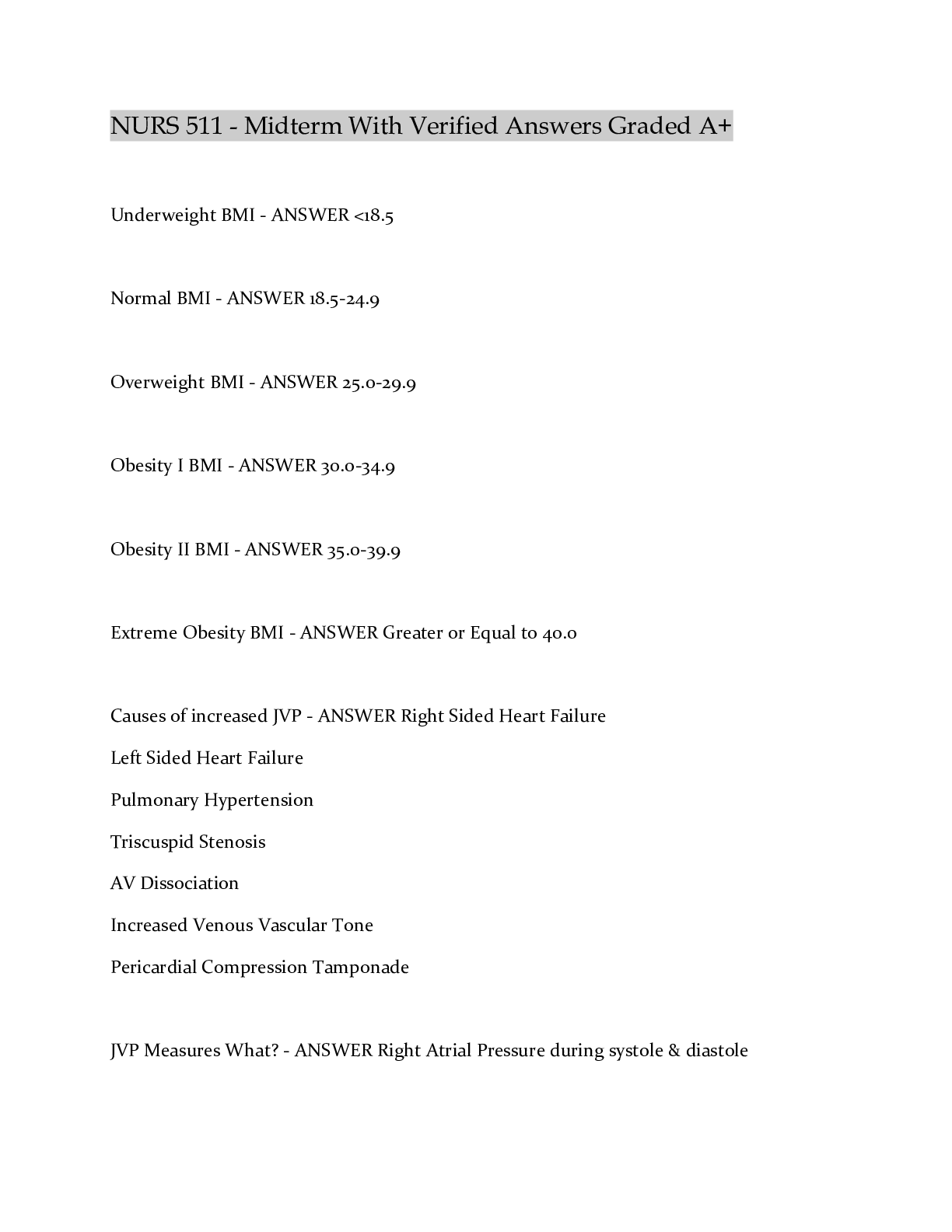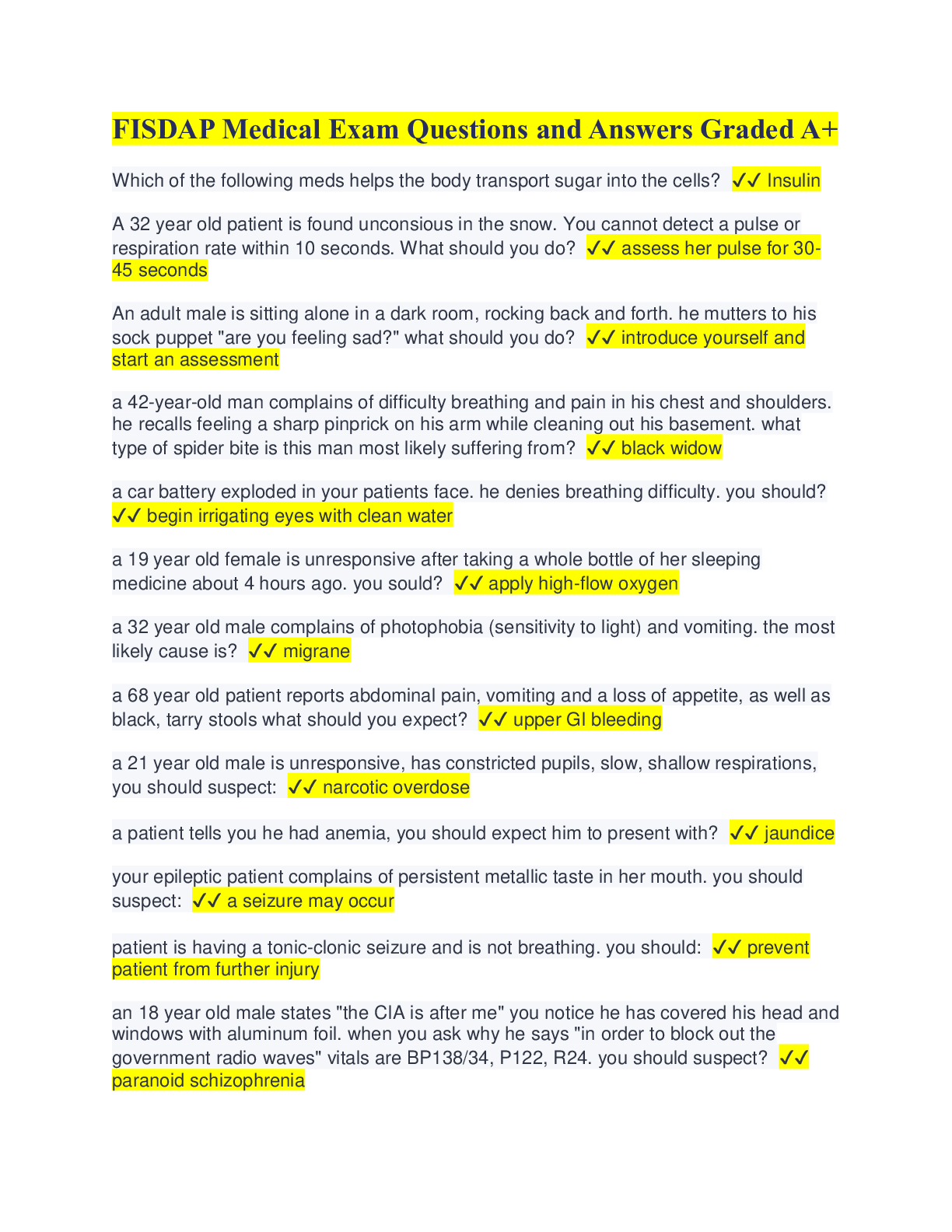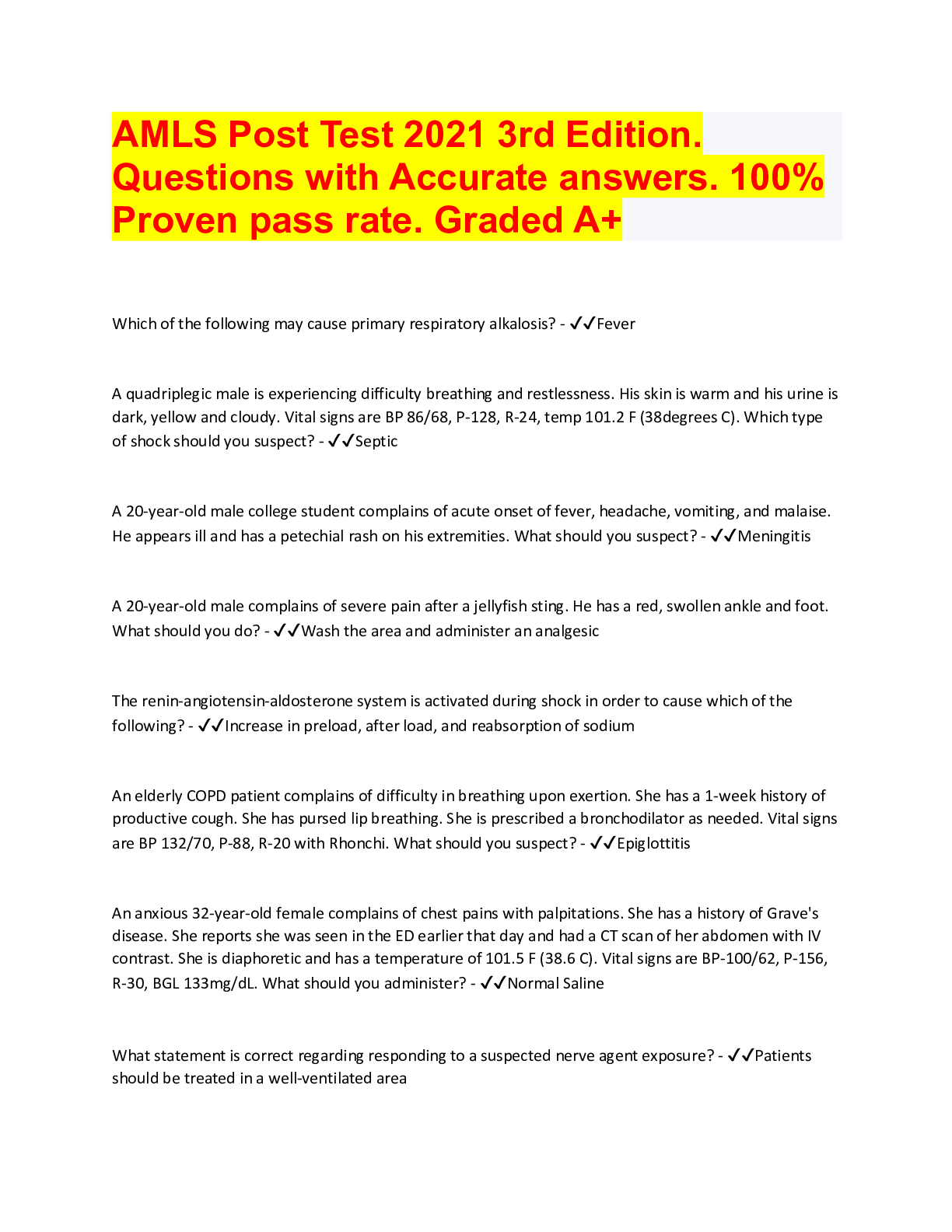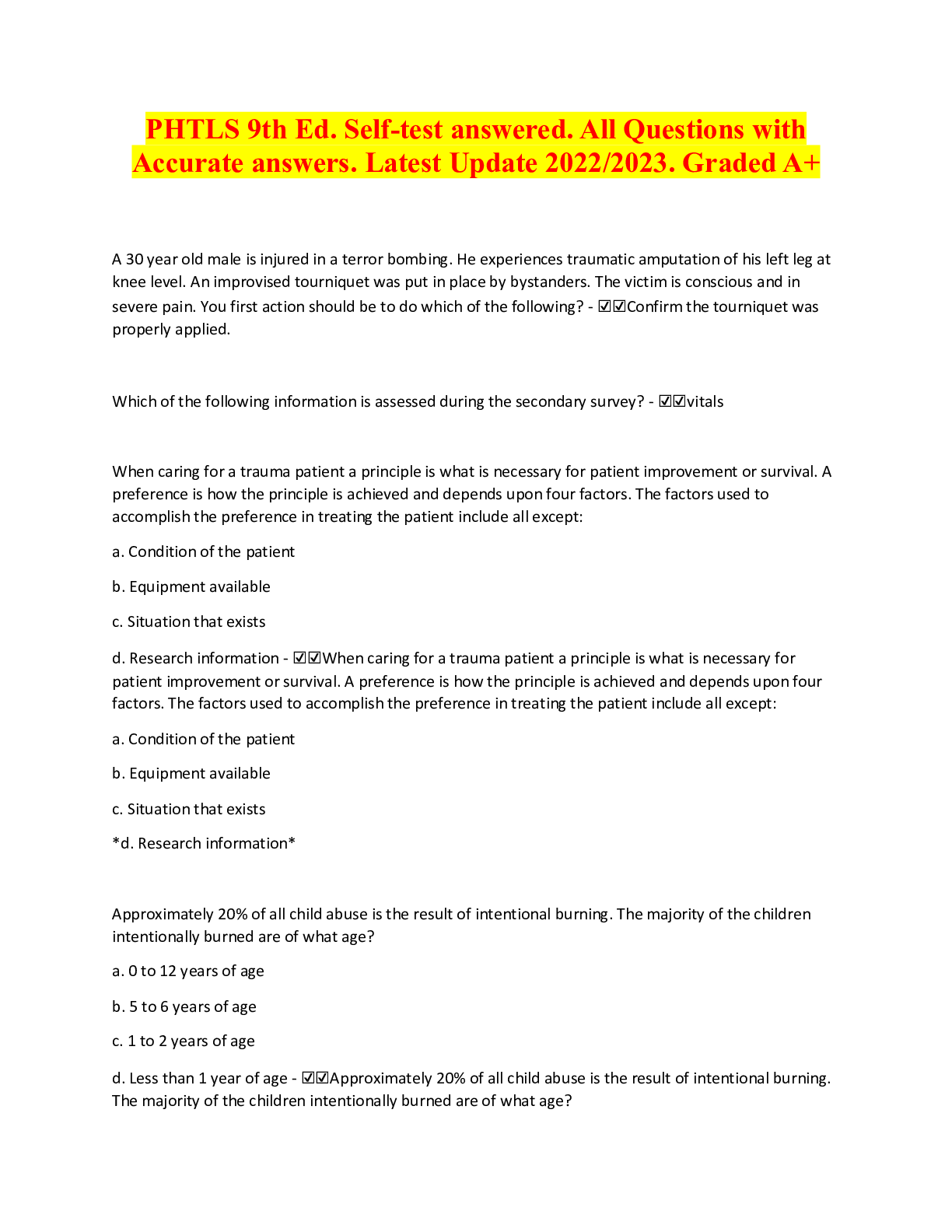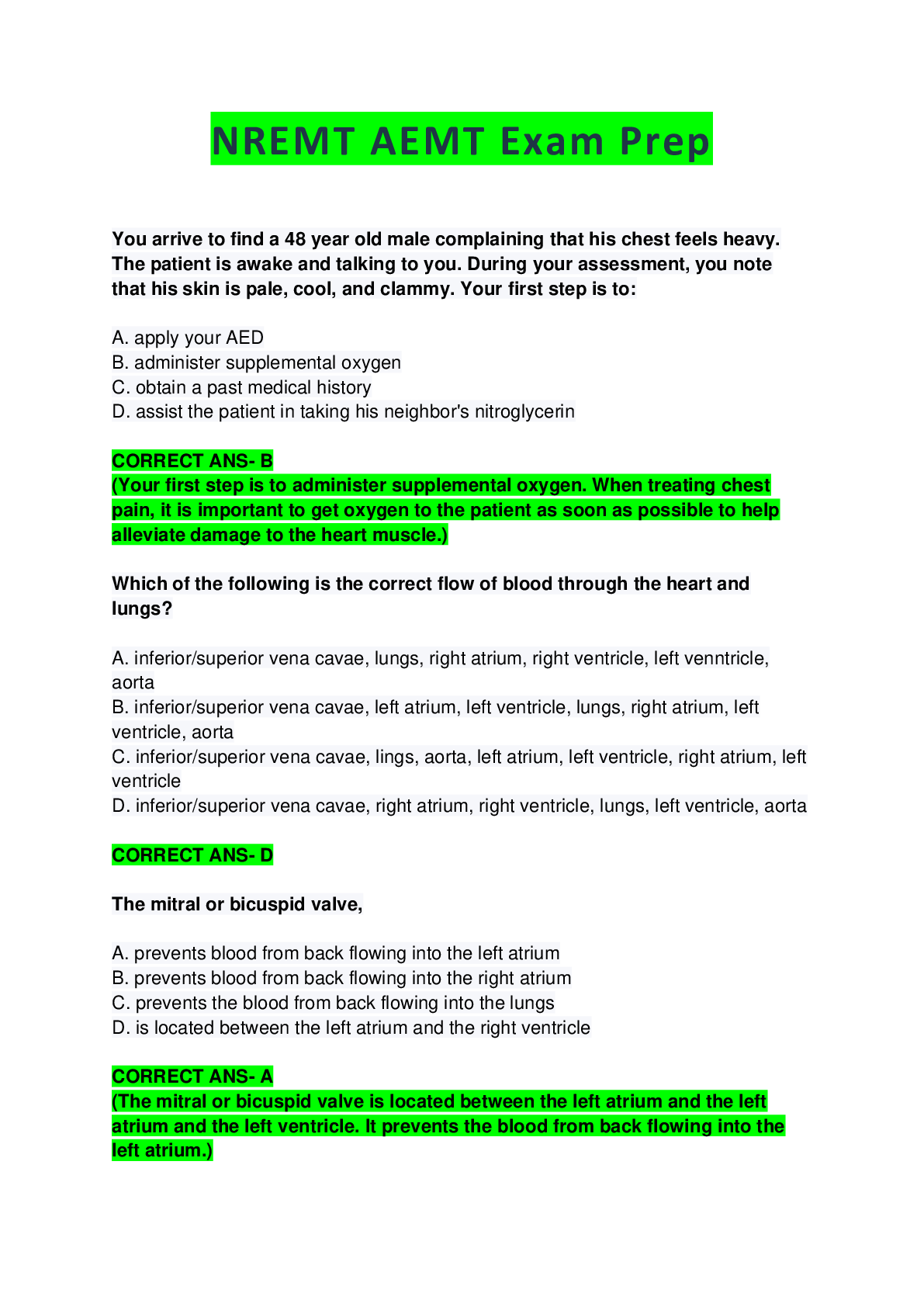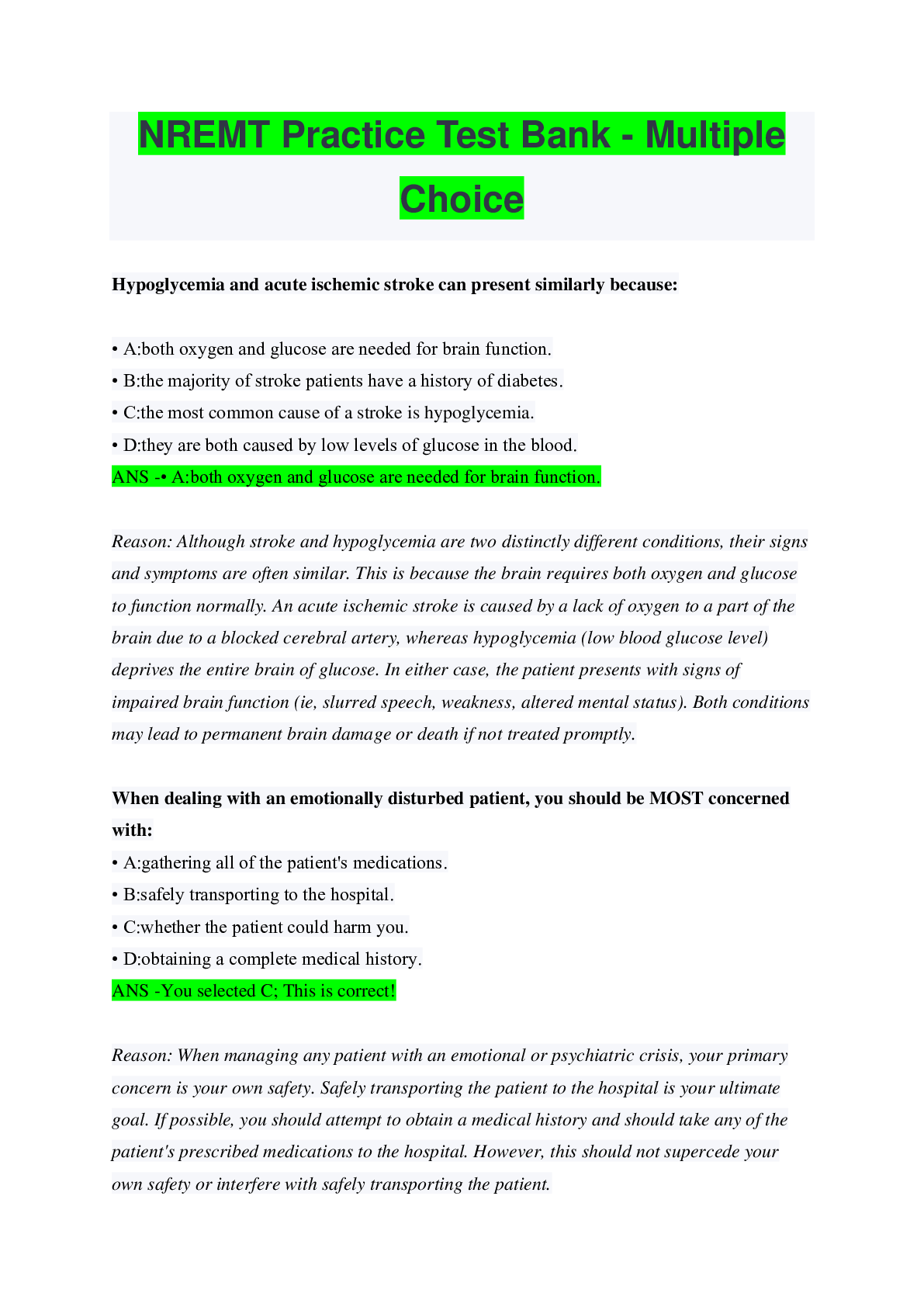Psychology > QUESTIONS & ANSWERS > Psych final Questions with accurate answers Graded A+ Latest 2022. (All)
Psych final Questions with accurate answers Graded A+ Latest 2022.
Document Content and Description Below
Psych final. Questions with accurate answers. Graded A+. Latest 2022. 1. Mental health is the successful adaptation to stressors from the - Ans-internal or external environment, evidence by thought... s, feelings, and behaviors that are age appropriate and congruent with local and cultural norms 2. The evidence of successful performance of mental functioning (mental health) is adaptation to - Ans-change, coping with stressors, fulfilling relationships with others, and the ability to accomplish productive activities 3. Mental illness is MALADAPTIVE (not good adjustment) responses to stressors from the internal or external environment, evidence by thought, feelings, and behaviors that are INCONGRUENT with the local and cultural norms, and INTERFERE with - Ans-the individuals social, occupational and/or physical functioning 4. Mental illness composes two things - Ans-Incomprehensibility and cultural relativity 5. Incomprehensibility relates to the INABILITY of the general population to - Ans-understand the motivation behind the behavior 6. Cultural relativity considers that the - Ans-rules, conventions, and understandings about behavior are conceived within an individuals own particular culture 7. Behavior is categorized - Ans-normal or abnormal according to ones cultural or societal norms. 8. therefor a behavior that is recognized as evidence of mental illness in one society may - Ans-be viewed as normal in another society and vice versa 9. Cultural aspects of mental illness: it is usually members of the lay community rather than a - Ans-psychiatric professional who initially recognize that individuals behavior deviates from the social norms 10. Cultural aspects of mental illness: people who are related to an individual or who are the same cultural or social growl are less likely than - Ans-someone who is relationally or culturally distant to label that individuals behavior as mental illness 11. --family members try to normalize the behavior 12. Cultural aspects of mental illness: Psychiatric see a person with mental illness most often when - Ans-the family members can no longer deny the illness 13. Cultural aspects of mental illness: Individuals in the lowest socioeconomic class usually display the - Ans-highest amount of illness symptoms 14. Cultural aspects of mental illness: the higher the social class, the greater the - Ans-recognition of mental illness behaviors. Likely to be labeled by their family 15. Cultural aspects of mental illness: the more highly educated the greater the - Ans-recognition of mental illness behaviors. More about type of education 16. The more humanistic types of professions like lawyers, social workers, teachers, nurses are more likely to seek psychiatric assistance more than - Ans-those of business, computer specialist and engineers. 17. Cultural aspects of mental illness: in terms of religion, jewish people are more likely than - Anspeople who are catholic or protestant to seek psychiatric assistance 18. Cultural aspects of mental illness: women are more likely than - Ans-men to recognize the symptoms of mental illness and seek assistance 19. Cultural aspects of mental illness: the greater the cultural distance from the mainstream of society (the fewer the ties with conventional socially) the - Ans-greater the likelihood of a negative response by society to mental illness 20. Fight or flight is the state manifested by a specific syndrome which consists of - Ans-all nonspecifically induced chances within a biologic system 21. Fight or flight occurs in response to psychological or emotional stimuli just as it does to - Ansphysical stimuli 22. the psychological or emotional stressors are often not resolved as rapidly as someone - Ansphysical stressors therefor the body may be depleted of its adaptive energy more readily than it is from physical stressors 23. Three stages of fight or flight are - Ans-alarm reaction state 24. stage of resistance 25. stage of exhaustion 26. Alarm reaction state - Ans-the response of the fight or flight is initiated 27. Stage of resistance uses the response from the first stage as - Ans-a defense to try to adapt to the stressor 28. -if adaption occurs the third stage is prevented or delayed 29. Stage of exhaustion occurs when there is a - Ans-prolonged exposure to the stressor to which the body has become adjusted. Energy is depleted. 30. Biological responses include - Ans-the immediate response 31. the sustain response 32. The immediate response the hypothalamus stimulates the - Ans-SNS 33. When the SNS is stimulated the following physical effects take place: - Ans-1. Adrenal medulla releases norepinephrine and epinephrine into the bloodstream 34. 2. Pupils dilate 35. 3. Secretions from the lacrimal (tear) glands increase 36. 4. In lungs: bronchioles dilate and the respiration rate increases 37. 5. Cardiac contraction, cardiac output, HR, and BP increases 38. 6. Gastrointestinal motility and secretions decrease and sphincters contract 39. 7. In liver: glycogenesis & gluconeogenesis increases while glycogen synthesis decreases 40. 8. Bladder muscles contract while the sphincter relaxes. Also an increased ureter motility 41. 9. Secretion of the sweat glands is increased 42. 10. Lipolysis occurs in the fat cells 43. (AP SIC GIBS L) 44. The sustained response is when the stress response is not relieved immediately and the person remains under stress for a long time they hypothalamus then stimulates - Ans-the pituitary gland 45. The pituitary gland then releases hormones that produce the following effects: - Ans-1. Adrenocorticotropic hormone stimulates the adrenal cortex to release glucocorticoids and mineralocorticoids resulting in and increased gluconeogenesis and retention of sodium and water and decreased immune and inflammatory responses. 46. 2. Vasopressin (antidiuretic hormone) increases fluid retention and also increases BP through constriction of blood vessels 47. 3. Growth hormone has a direct effect on protein, carb, and lipid metabolism resulting in an increased in serum glucose and free fatty acids 48. 4. Thyrotrophic hormone stimulates the thyroid gland to increase the basal metabolic rate 49. 5. Gonadotropins cause a decrease in secretion of sex hormones, resulting in decreased libido and impotence 50. (AV GTG) 51. Mild anxiety is seldom a problem for the individual. it is associated with the - Ans-tension experiences in response to the events of day-to-day living. 52. Mild anxiety prepares people for action. IT sharpens - Ans-senses, increases motivation and perceptual field, which results in a heightened awareness of the environment. The individual is able to function at his or her optimal level 53. -Greatest for learning! 54. Moderate anxiety is when anxiety increases and the extend of the perceptual field - Ansdiminishes. increased muscular tension and restlessness are evident 55. Moderate anxiety makes the individual less - Ans-alert to events occurring within the environment. Attention span and ability to concentrate decrease. Might need assistances with problem solving. 56. Severe anxiety makes the perceptual field so greatly - Ans-diminished that concentration centers on one particular detail only or on many extraneous details. Cant concentrate and can't complete simple tasks 57. Severe anxiety discomfort is experienced to the degree that virtually all poverty behavior is - Ans-aimed at relieving the anxiety. 58. Emotional symptoms of severe anxiety - Ans-confusion, dread, horror 59. Physical symptoms of severe anxiety - Ans-headaches, palpitations, insomnia 60. Panic anxiety the individual is unable to focus on even - Ans-one detail within the environment. 61. -no human or communication interactions 62. With panic anxiety misperceptions are common and a loss of - Ans-contact with reality may occur. They think they have a life threatening illness or fear they are going crazy. 63. *this is life threatening if prolonged 64. Behavior: wild and desperate actions or extreme withdrawal 65. Mild anxiety defense mechanisms - Ans-Sleeping, eating, physical exercise, smoking, crying, yawning, drinking, pacing, foot tapping etc. 66. Mild to moderate anxiety defense mechanisms is the ego defense mechanism - Ans-the level of anxiety increases the strength of the ego is tested and energy is mobilized to confront the threat. 67. Covering up a real or perceived weakness by emphasizing a trait one considers more desirable is - Ans-compensation 68. Refusing to acknowledge the existence of a real situation or the feelings associated with it is - Ans-denial 69. Transfer of feelings to something that is less threatening or that is neutral is - Ans-Displacement 70. Attempting to make excuses t [Show More]
Last updated: 1 year ago
Preview 1 out of 212 pages
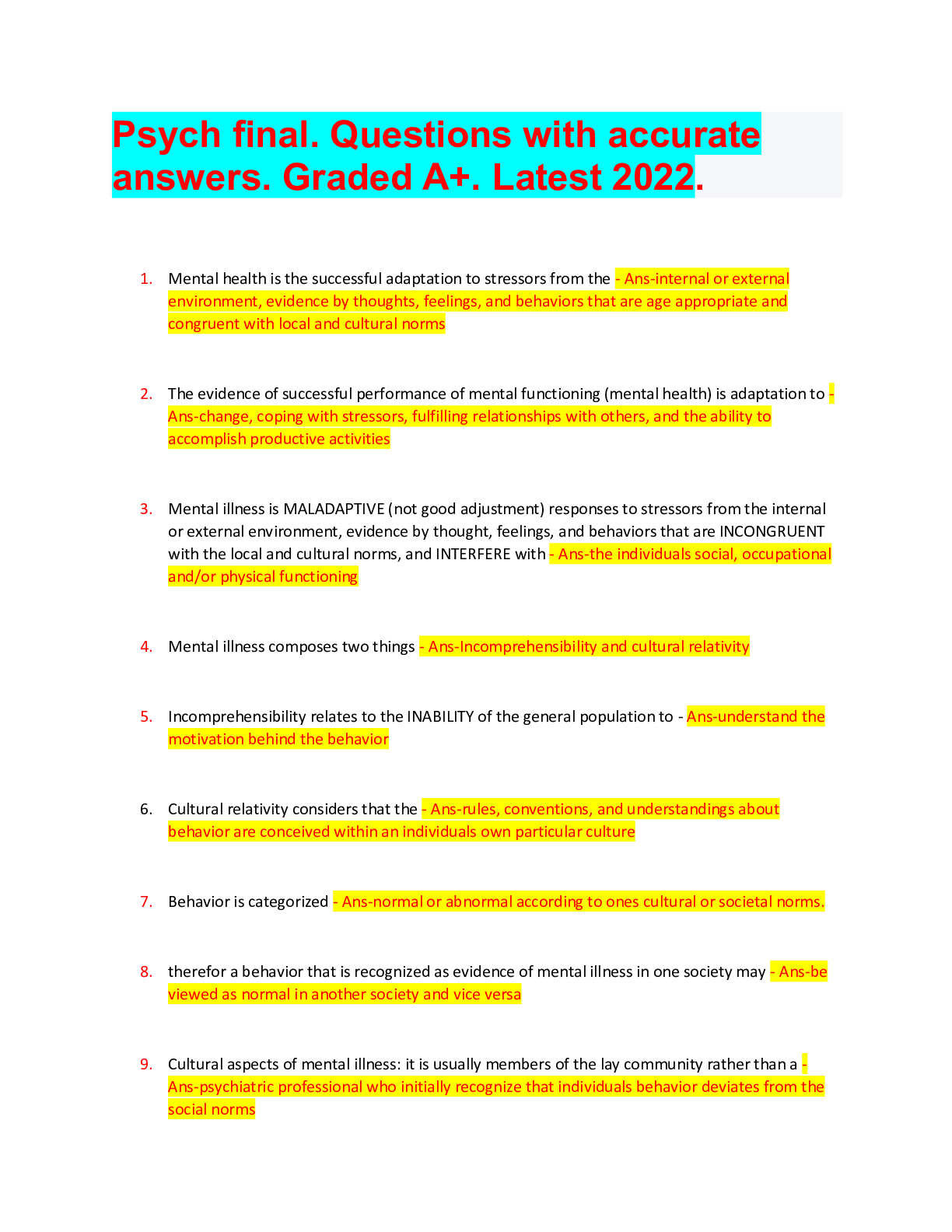
Reviews( 0 )
Document information
Connected school, study & course
About the document
Uploaded On
Jun 23, 2022
Number of pages
212
Written in
Additional information
This document has been written for:
Uploaded
Jun 23, 2022
Downloads
0
Views
59

.png)
.png)
.png)
.png)
.png)
.png)


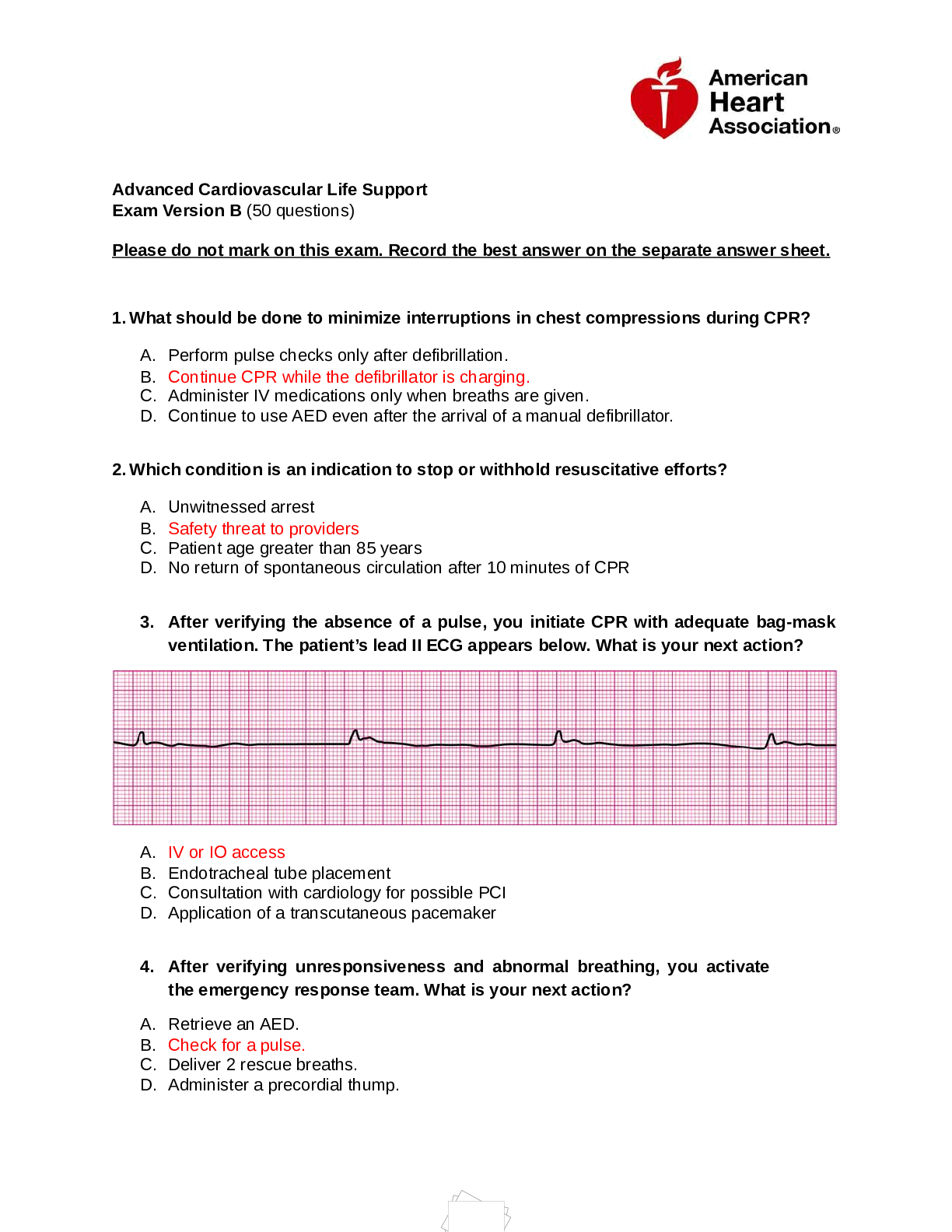


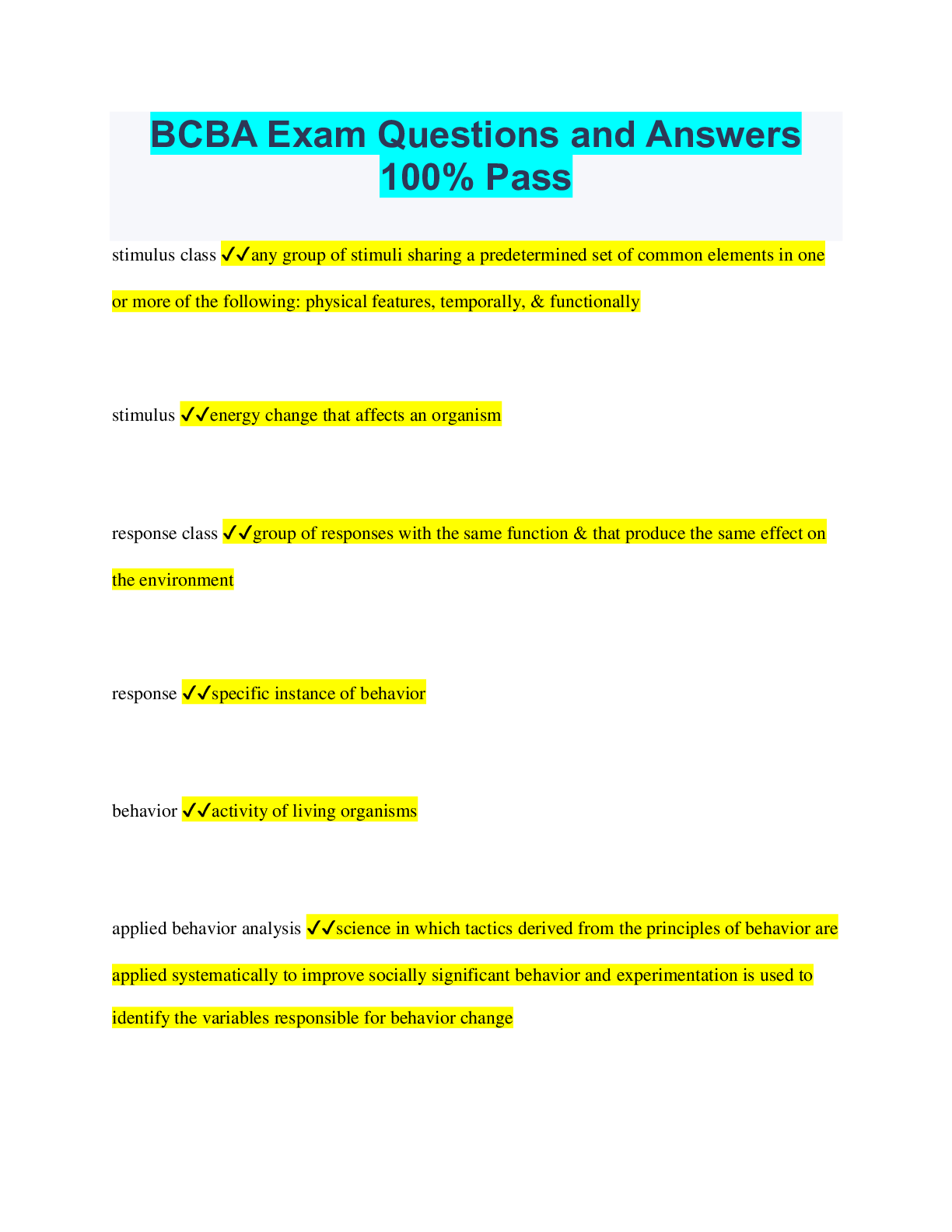
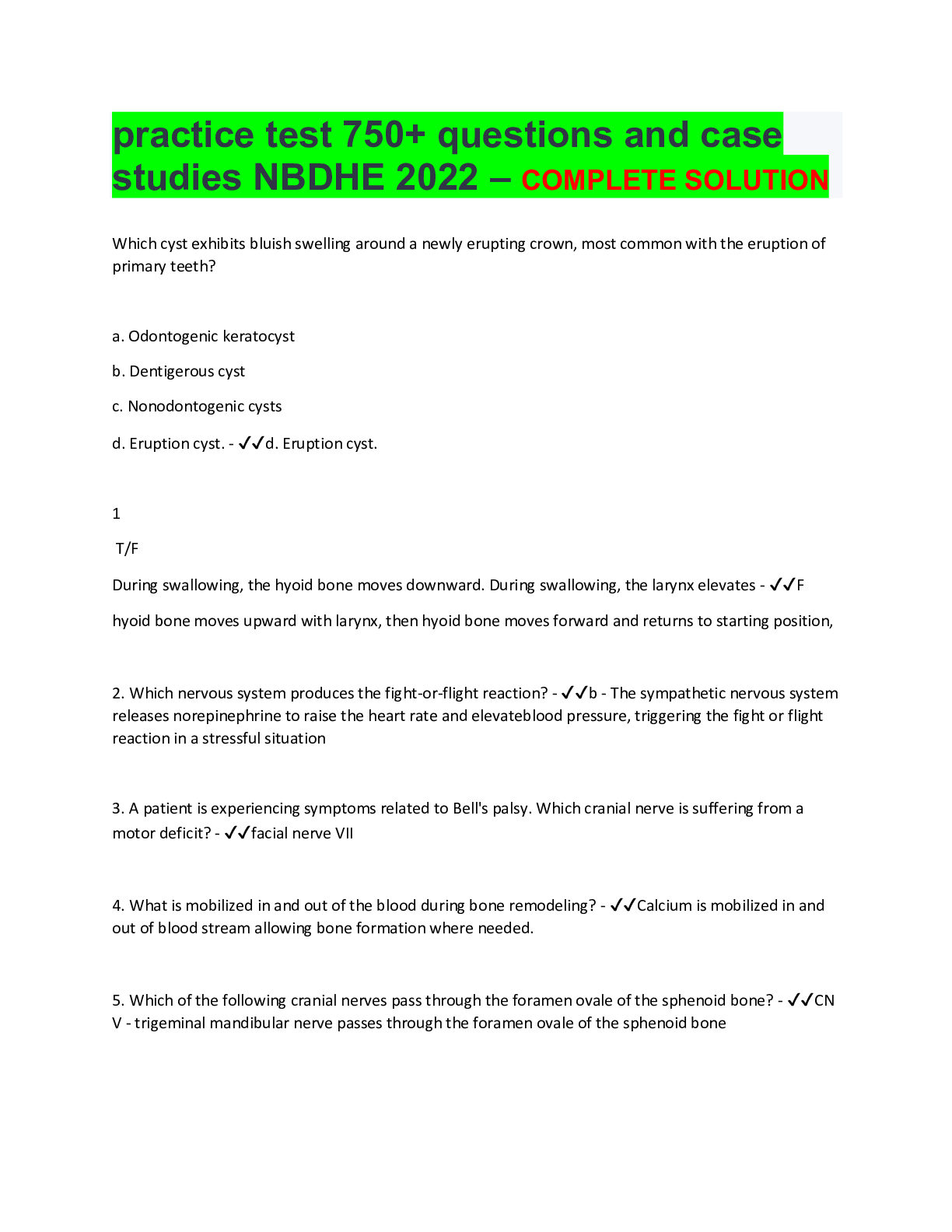
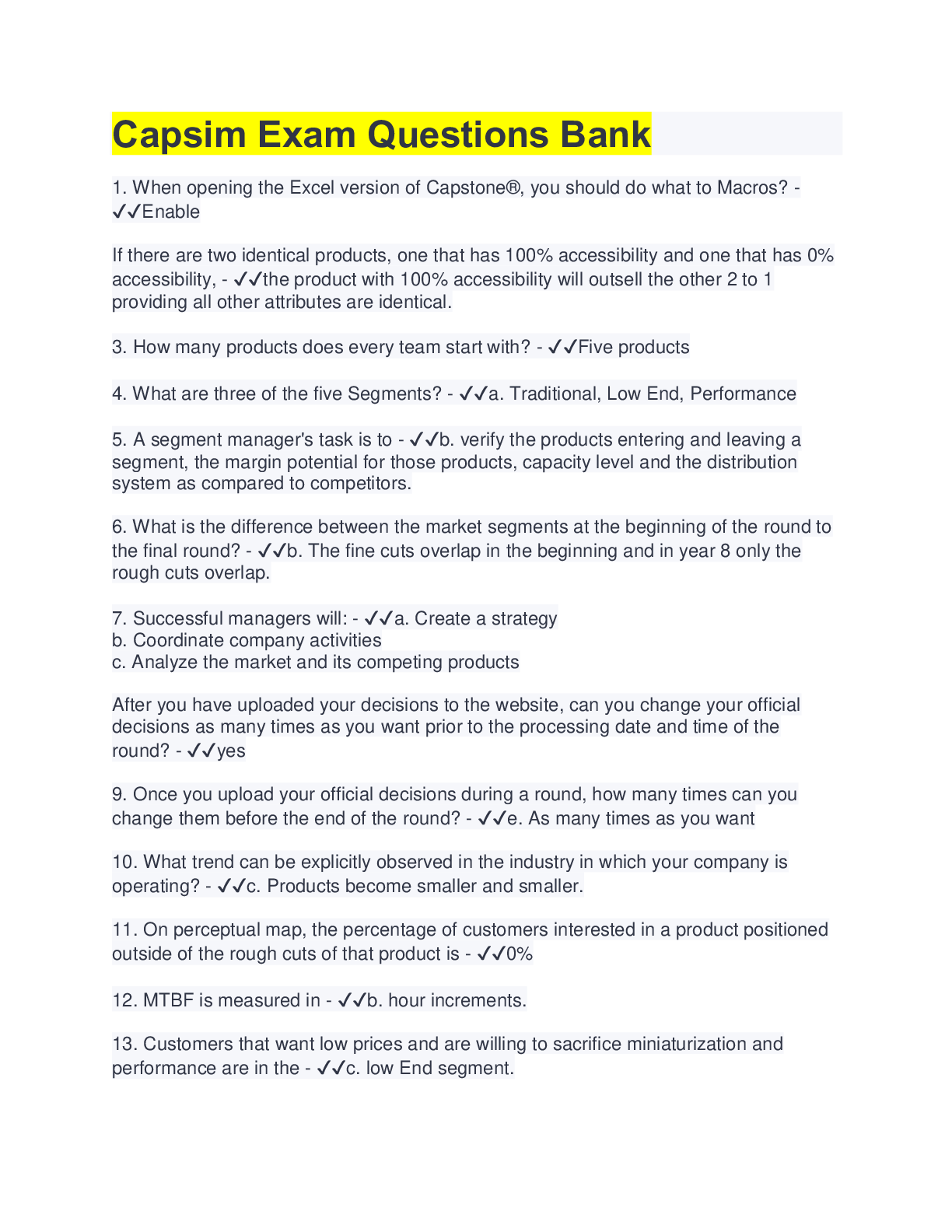
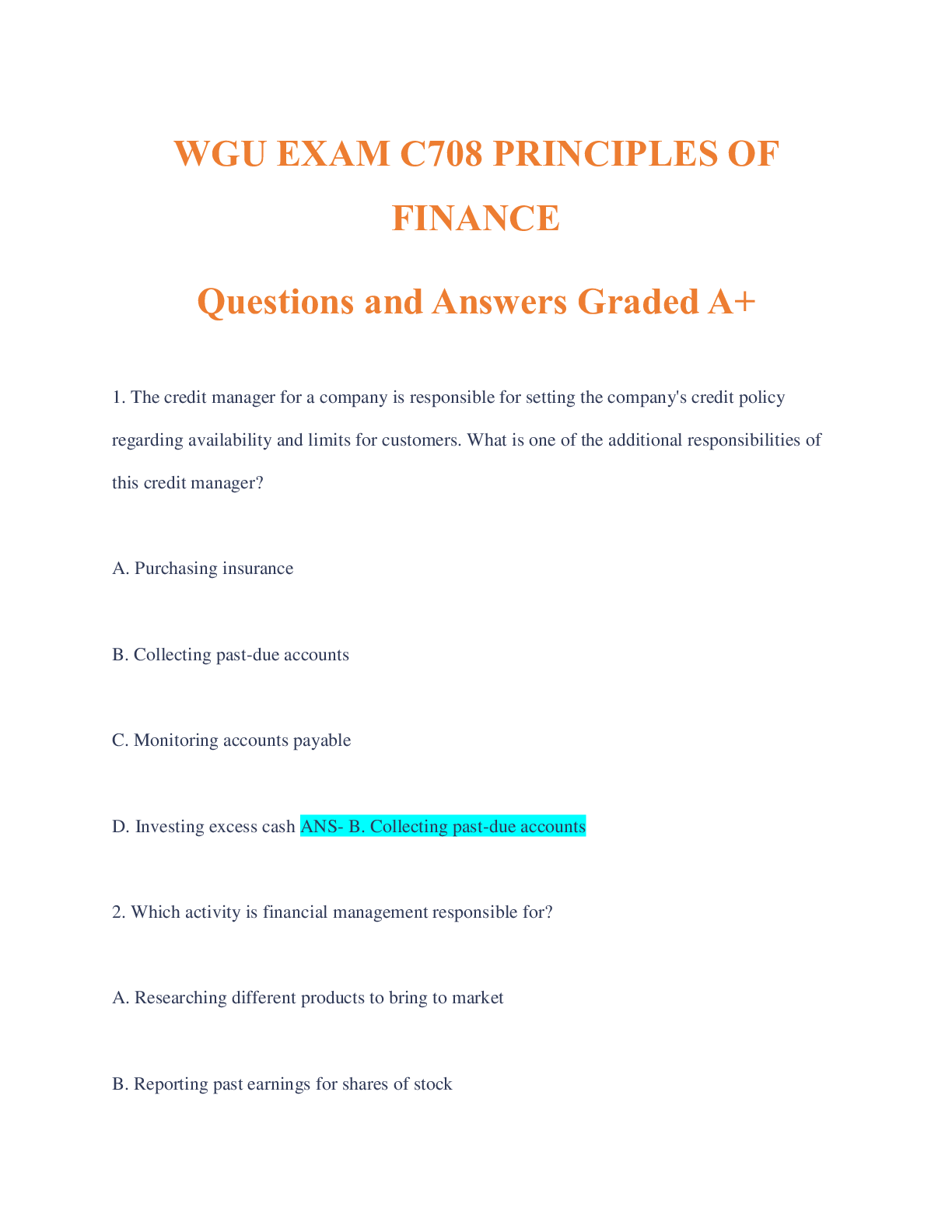

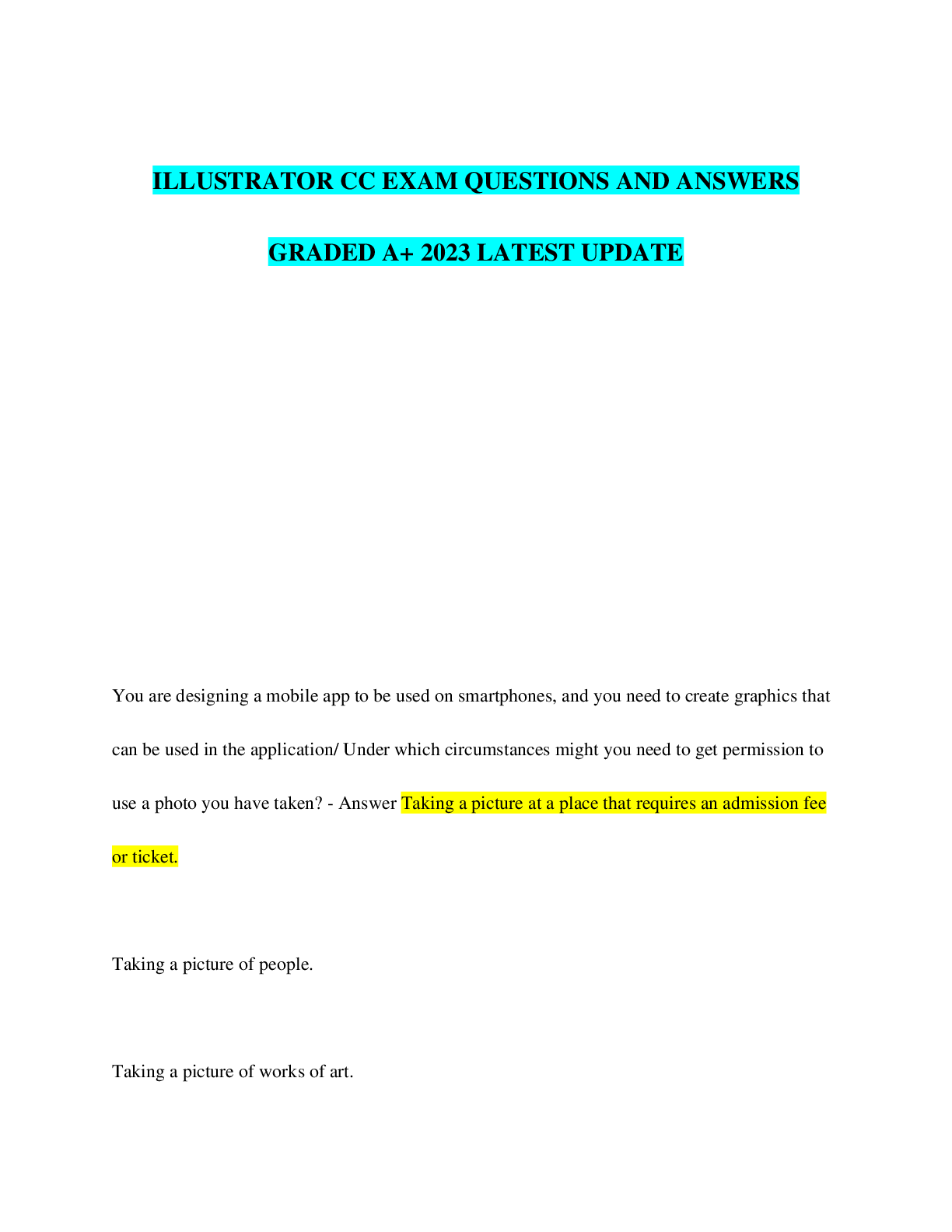


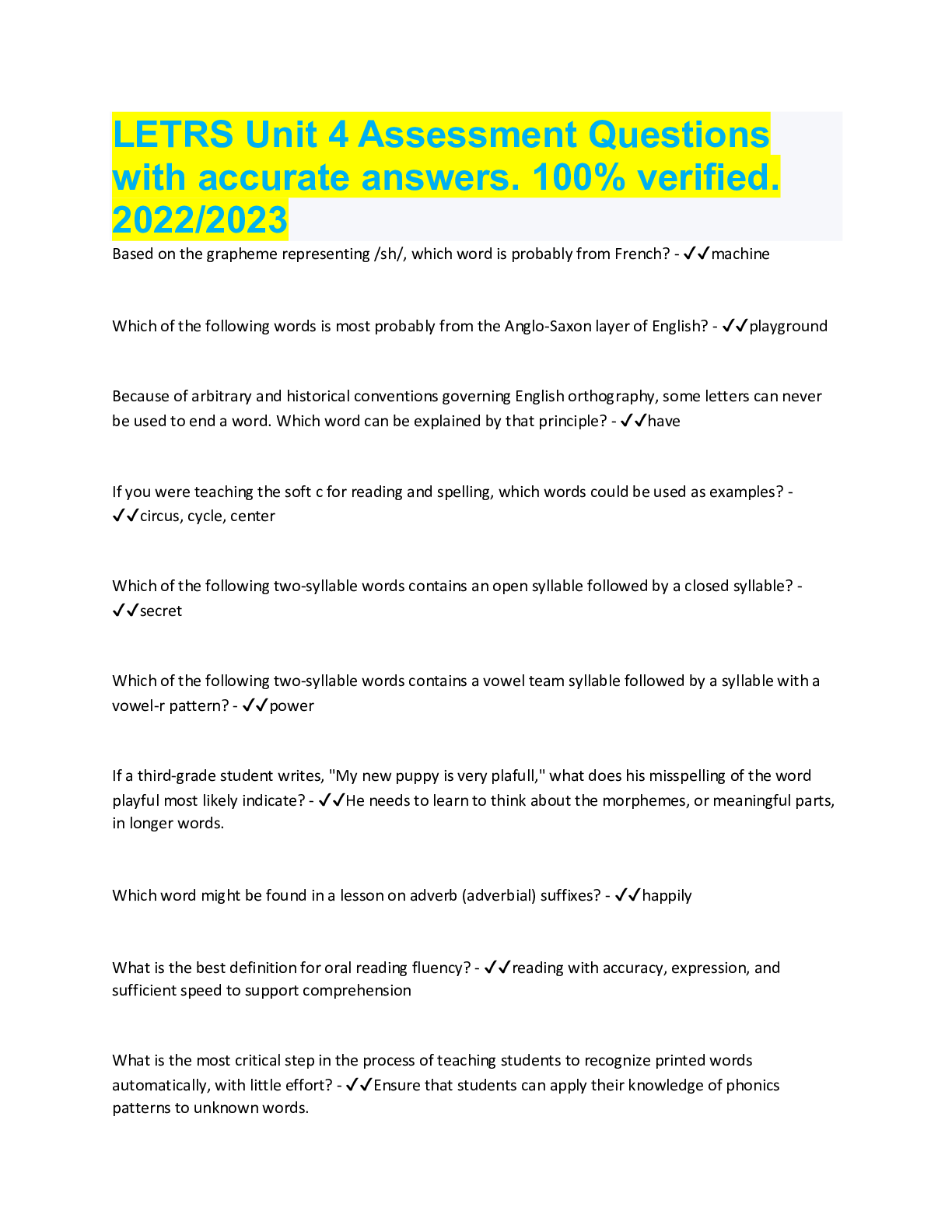
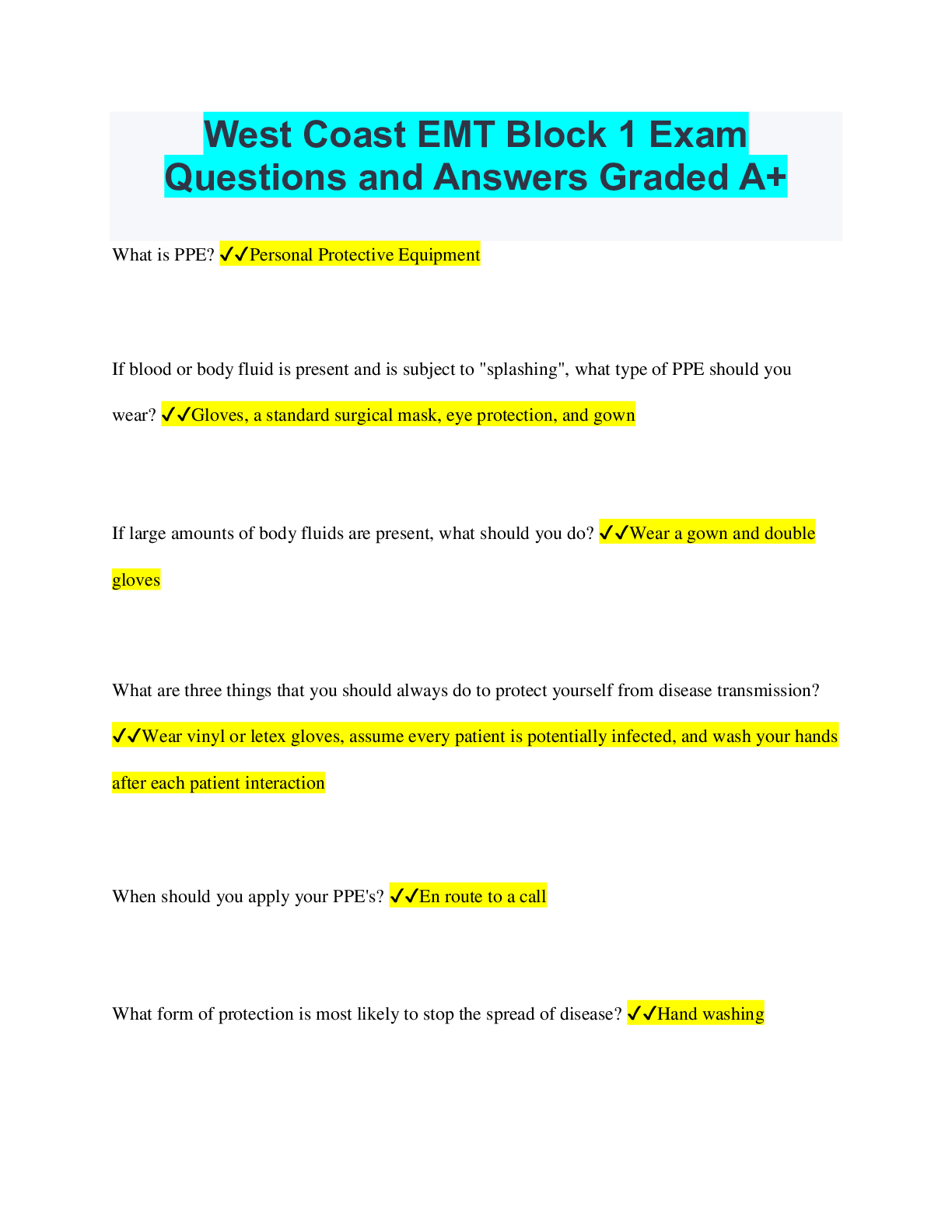
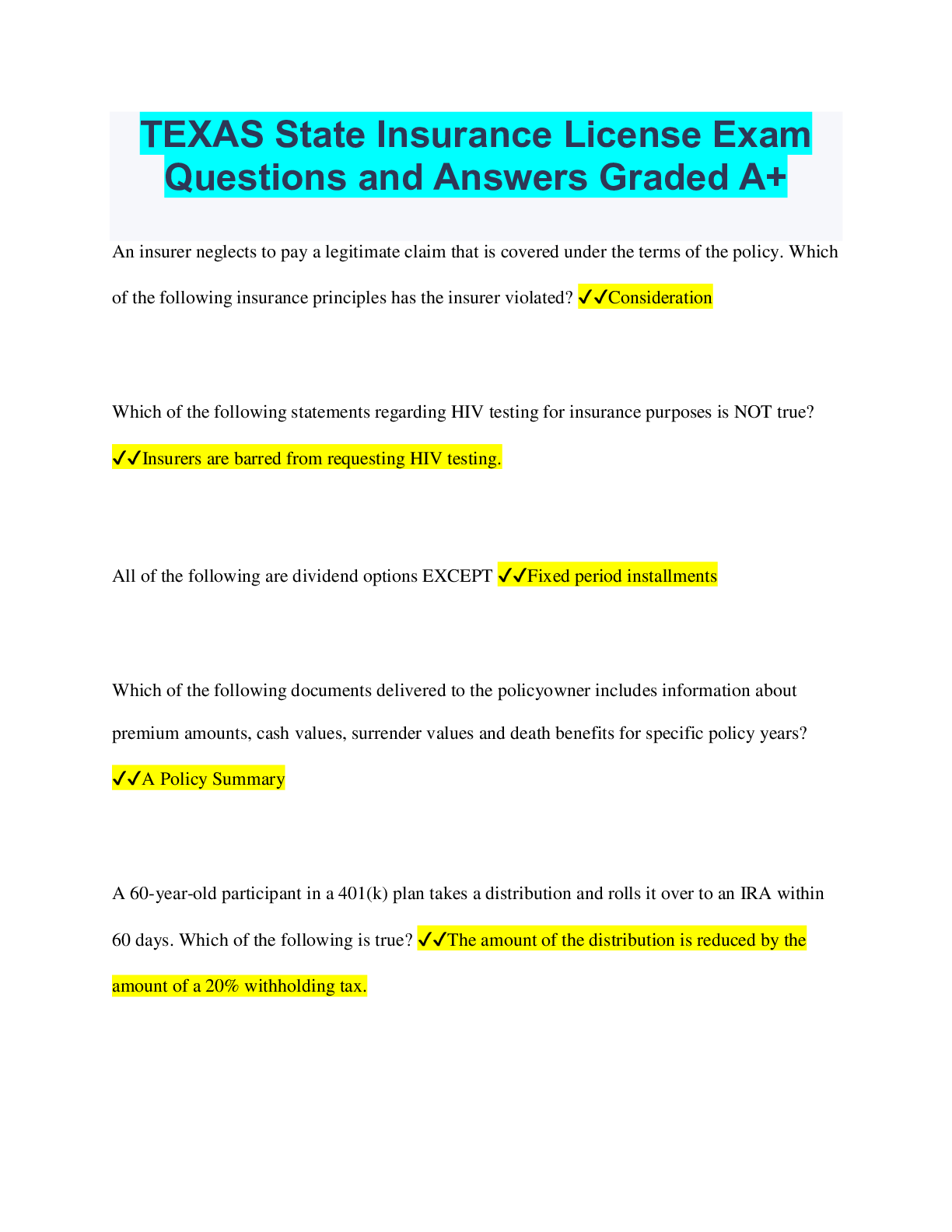


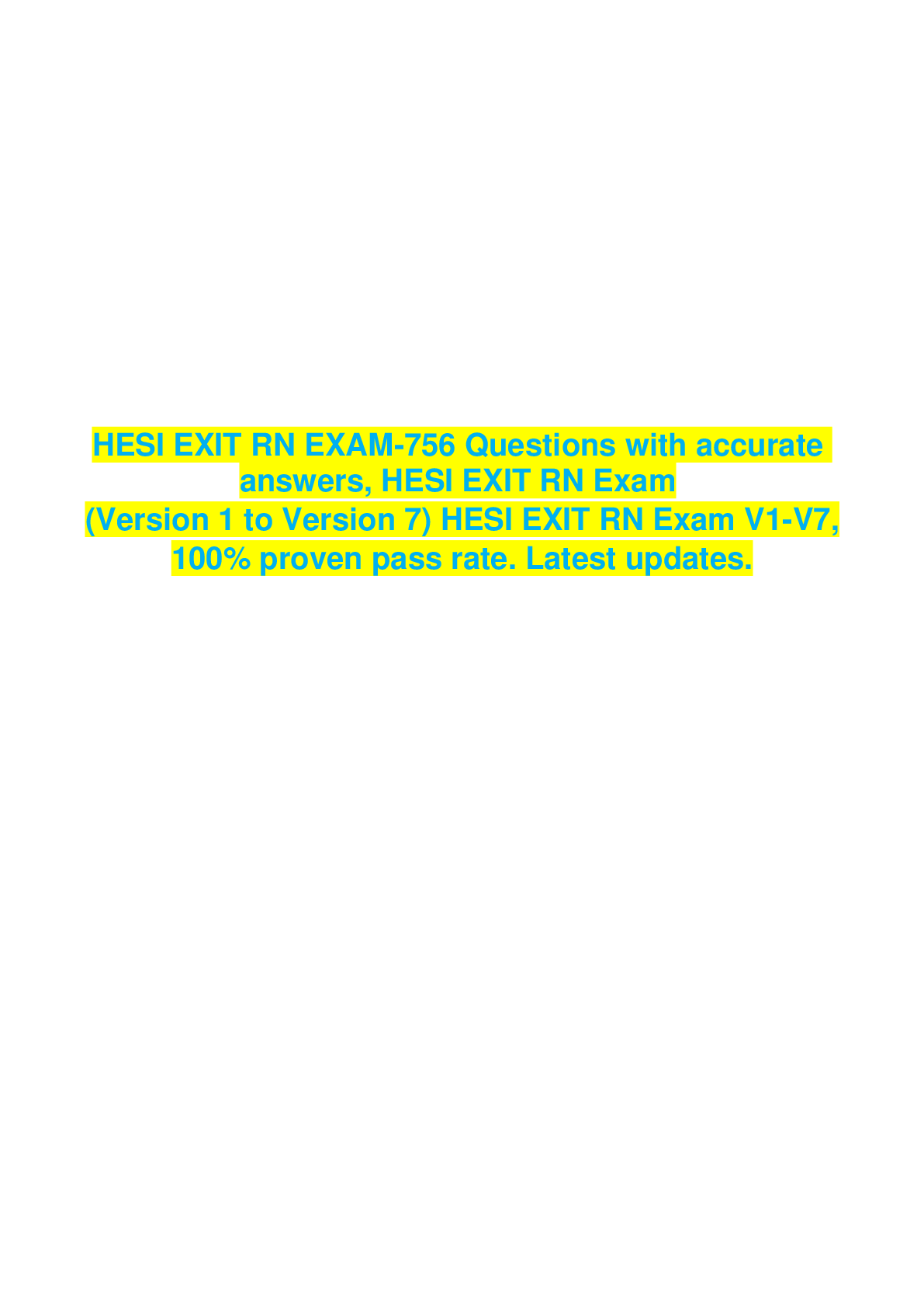
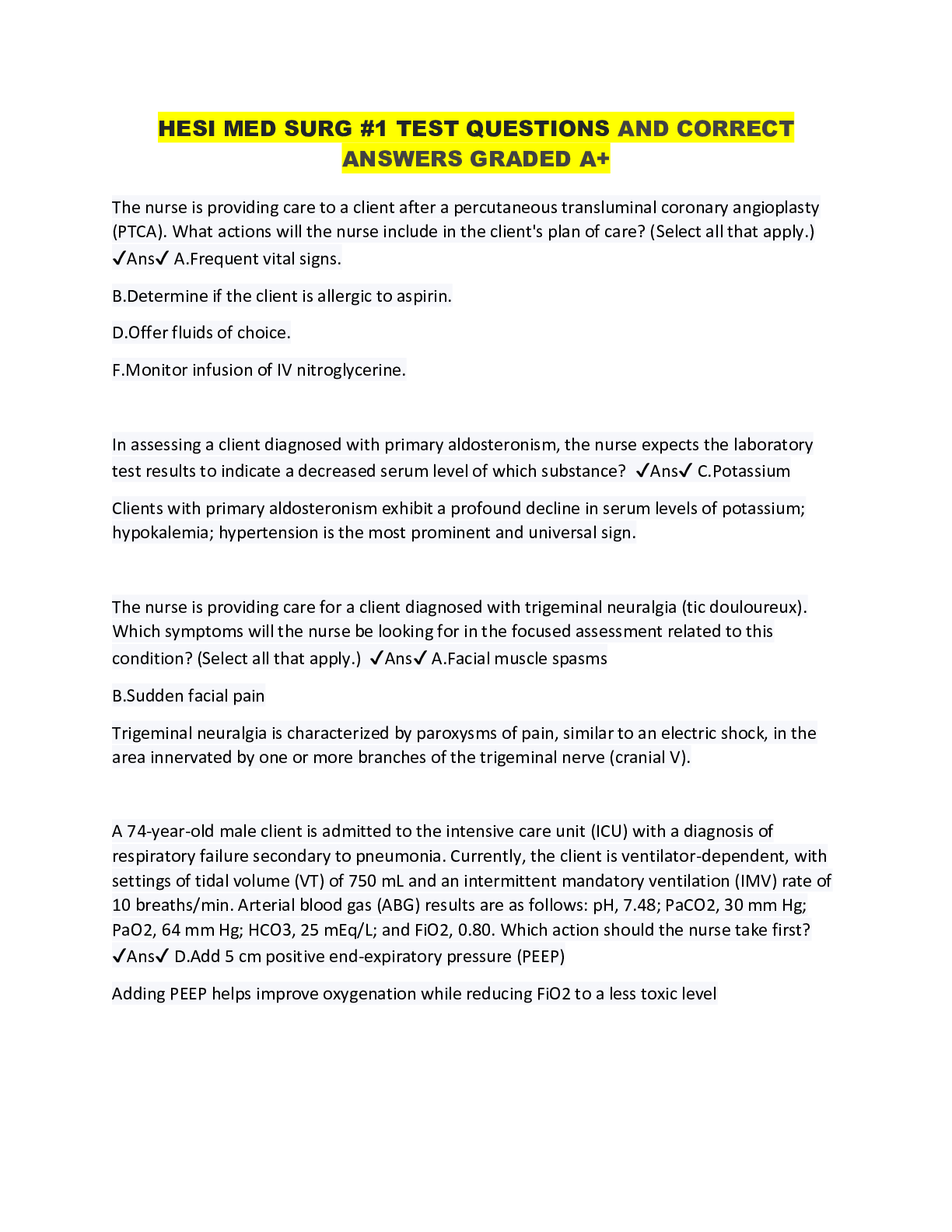
 Exam Preparation With Correct Answers Graded A+-1.png)
